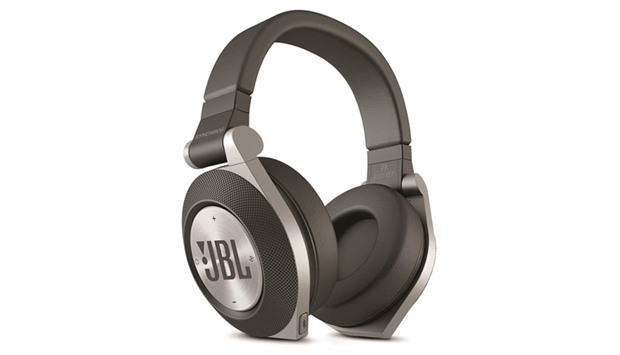Apple’s omission of a 3.5mm jack on its iPhone 7 and iPhone 7 Plus seems to have propelled interest into wireless audio to a whole new level. A large number of new Bluetooth headsets have been released since September, probably a combination of expectations of an increased demand for Bluetooth headsets and the introduction of a new form factor of Bluetooth headsets.
You may be wondering to yourself what the furore is over the lack of a 3.5mm audio jack in a phone. Bluetooth headsets are, after all, wireless, more convenient and can be had for as little as a hundred riyals. A good number of iPhone 7 reviewers echoed these sentiments, saying that they had already switched to Bluetooth earbuds a while back and the lack of a 3.5mm audio jack barely bothered them.
This obviously disregards the fact that you are also paying for the wireless technology, the built-in battery and the research that went into miniaturising the entire setup to fit into your ears. For this simple reason, a wired headset will almost always sound better than a similarly priced wireless headset. If you want to get the best possible audio for your money, wired headsets are the way to go.
For others who are willing to compromise some audio fidelity for convenience, today we are going to be discussing the different form factors that Bluetooth headsets in the market come in, and their general pros and cons:
In-ear headsets
These are the most common type of Bluetooth headsets on the market, and the majority of sports wireless headsets fall into this category. The earbuds go into your canals and are usually secured by extra silicon attachments to keep them from coming out during workouts. The two headsets are connected to each other via a wire and a remote control is frequently built into the wire. The sports versions usually come with some form of water (and thus sweat) resistance.
Since these are the most common type of Bluetooth headsets on the market, you can find models by no-name companies in Qatar for QR100 or even lower. I would suggest doing your ears a favour and staying away from these models. Stick to known companies. Paying more will get you better sound as well as more features, such as live heart rate monitoring.
The battery lives on these models can range anywhere from between 4 to 7 hours. So while it will be good enough for the duration of your workout (or two or three workouts), if you listen to a lot of music, expect to recharge it before your day is over.
Neckbands
This style of wireless headsets started showing up a few years ago. The headset consists of a band that goes around your neck, with earbuds protruding from each end. These earbuds are generally connected to the band with very thin wires and may not be suitable for exercise. They have the benefit of sitting comfortably around your neck when not in use. Many headsets of this style also offer better battery lives, up to ten hours and more.
LG dominates the market with its offerings, ranging from as low as QR200 and going up to QR500 and above. The top versions have retractable wires and audio tuned by the likes of JBL and Harman Kardon. Even if you are not into labels, the pricier versions output better audio. Samsung also has a few models in this category, though their range isn’t as extensive as LG’s and doesn’t quite go as far up the price chart.
Bluetooth headphones
The oldest kind, these come in your standard headphone form factor (minus, of course, the wires). If you are after the best battery life in a Bluetooth headset, these are your best bet. The battery life varies between manufacturers, but you can easily find models that will offer you 16 hours of battery on a single charge and even more. You do end up getting headphones that have a significantly greater footprint than other Bluetooth headsets, are heavier and the least discreet of all varieties. But because they also feature larger drivers, you can generally expect the sound coming out of them to be better than similarly priced Bluetooth headsets in another form factor.
Truly wireless
This is the latest innovation to have hit Bluetooth headsets. They are the same as your in-ear Bluetooth headsets, except that the wire between the two earbuds has been removed. The two pieces connect to each other wirelessly. The way they normally work is that one of the earpieces receives the signal from the phone and transmits it to the other (Apple’s implementation in its AirPods is different in that both units get audio from the phone itself).
You are paying entirely for the convenience here. Since all the circuitry has to fit inside the earpiece, expect much smaller battery lives. Most implementations last up to 2-3 hours in a single go, before having to be placed in their carrying cases that also double as their charging docks. This may be good enough for a workout, but definitely inconvenient for longer listening sessions. Even Apple’s AirPods, which offer the longest charge in this category, max out at 5 hours and boost a design that has frequently been ridiculed for its resemblance to a toothbrush.
You will have to take along the carrying case for such headsets with you, which adds bulk to the package and takes away some of the convenience. This may not be a big deal if you already carry your existing headsets in a carrying case, but those looking for a much lighter package may not be pleased.

The JBL Synchros E50BT has an advertised battery life of 16 hours on a single charge.


